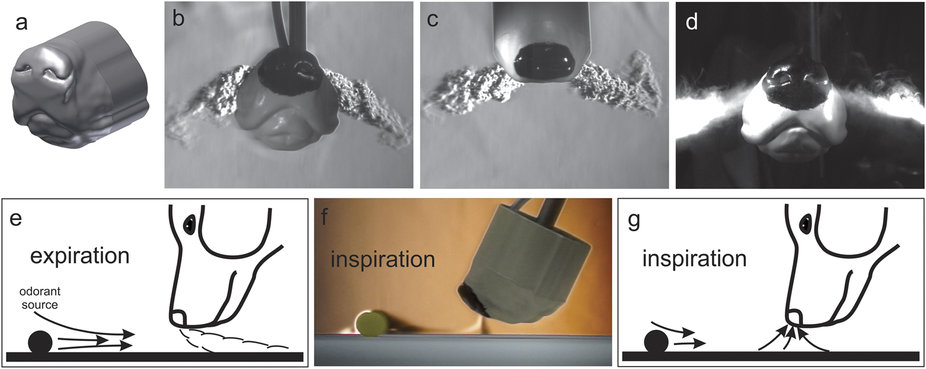Researchers are using a 3D printed dog nose to detect “explosives, narcotics, pathogens, or even cancer.” An article published this month in peer reviewed academic journal Scientific Reports records the experiments with the artificial dog nose in a quest to determine what makes the animal so good at smell detection, and to better harness this ability to solve real world problems.
‘Biomimetic Sniffing Improves the Detection Performance of a 3D Printed Nose of a Dog and a Commercial Trace Vapor Detector,‘ documents the construction of a custom sniffing system and how the research team used 3D printing to gain insight into this particular ability of man’s best friend. The research was carried out in conjunction with the FDA, MIT and the National Institute of Standards and Technology (NIST) where additive manufacturing is the subject of several other interesting projects.
Gif shows the 3D printed nose in action. Gif from NIST.
What’s so special about a dog nose?
A canines superior sense of smell is one reason why they are used to sniff out narcotics, and other illegal or dangerous substances. This ability is due to the animals having 40 times more olfactory receptors than humans. While vapor detection devices can compete, they have not been able to replicate the way dogs exhale. In addition to having more smell receptors, dogs also have an advantage in the way they exhale and inhale air. This idea is shown above with the moving images depicting the air flow moving to and from the animal’s snout.

The researchers 3D printed an anatomically correct golden retriever’s nose in order to understand what makes a dog so good at sensing smell. Using a Schlieren optical system to evaluate the airflow of a dog’s sniff, they saw how the dog’s nostrils are aligned in order to direct airflow away from their body in order to draw new fresh air in. Learning from nature in this way, to solve problems of our own is known as biomimicry. An interesting observation about Design for Additive Manufacturing (DfAM) is that topology optimized designs often appear to mirror patterns seen in nature, moving away from stark minimalist or classic design and towards a futuristic fusion of science and nature.
Researchers at GeorgiaTECH also drew inspiration from nature when they used 3D printing in order to reproduce the adhesive properties of a cat’s tongue.

How has this 3D printed nose helped?
After evaluating the nose through the 3D printed model, the team 3D printed nostrils in the same way and added them to vapor detectors. This improved the detectors dramatically, by up to a factor of 18. According to the team at NIST, this technology will have a wide variety of impact including on explosive detection and possibly even on detecting diseases such as cancer. They believe this breakthrough will enhance future vapor scanners, with prototypes already being made. These will be attached to existing scanners to improve their functionality.
The full research article is available here. And don’t forget tomorrow is 3D printing day.
Featured image is of a dog’s nose. Photo by Katie Orlinsky via The New York Times.



